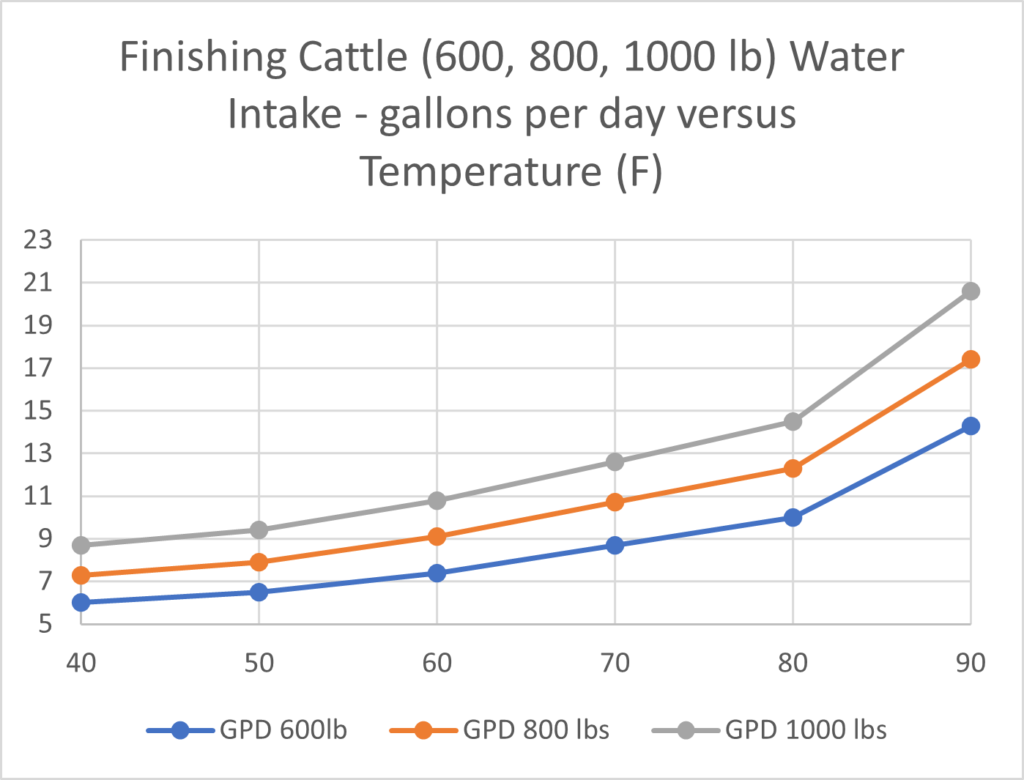Deprecated: Creation of dynamic property OMAPI_Elementor_Widget::$base is deprecated in /home1/savebloo/public_html/wp-content/plugins/optinmonster/OMAPI/Elementor/Widget.php on line 41

Water Withdrawal - Facts and Errors
The Permit renewal application has two fundamental numerical errors. Supreme Beef LLC lists 10,000 head of cattle at a consumption rate of 6.0 gallons per day (GPD) per cow. That calculates to an annual water withdrawal need of 10,000 x 365 x 6.0 = 21.9 million gallons per year (MGY) at an average withdrawal rate of 60,000 GPD. That is the amount granted in the 2017 permit that is now up for renewal. Note: Withdrawal permits are required at levels above 25,000 GPD. If consumption did not exceed 6.0 GPD per cow, then an operation with 4200 head could be supported without requiring a water withdrawal permit.
Both numbers used in the calculation are wrong, and the applicant and the DNR know this. It’s a matter of public record that the last three Nutrient Management Plans (NMP) submitted by the applicant to the DNR list 11,600 head as the operation capacity, not 10,000. Plus, the cattle in the adjacent W6 Farms barn considered by the DNR to be a separate open feedlot housing ~750 cattle, will also be using water from the two new permitted wells.
Daily water needs of finishing cattle are well known. We received the same numbers from correspondence or Extension documents from Oklahoma, Nebraska, and Iowa. Daily use is a function of animal weight and barn temperature. As you see in the graph below, the applicants estimate of 6.0 GPD consumption is valid only below 40 F and animal weights less than 600 pounds. Under all other conditions of temperature and weight, 6.0 GPD is a gross underestimation of the average daily need. A much more detailed analysis can be found in the document we’ve prepared titled Cattle Water Needs.

Based upon USDA reports we estimate that feeder starting weights will be in the 750-850 lb range and finishing weight will be in the 1450-1550 lb range. Average weight is extremely likely to be well above 1000 lbs. Based upon these assumptions, the average daily use is estimated to be greater than 10.0 GPD per cow, with peak use (hot days, heavy weights) exceeding 20.0 GPD per cow!
Additionally, we have analyzed animal feeding operation (AFO) water permit data obtained from the DNR water permit group in response to an open records request. See AFO 2017 Water Use Spreadsheet. Based upon records for 19 very large cattle operations located throughout Iowa, the basis for median “permit allocation” was 13 GPD per head, with the average basis being 17 GPD per head. That’s a lot more than 6.0 GPD that DNR allowed to be used in calculating the 2017 withdrawal limits. Based upon use records (same source), the median reported use for this group was 14 GPD per head, with the average use being 16 GPD per head.
What are the consequences of all this?
Using a conservative average value of 10.0 GPD per head, the annual water withdrawal is likely to exceed 11,600 x 365 x 10.0 = 42.3 MGY, double the amount estimated by the applicant. Put in perspective, this water withdrawal is almost equal to the annual withdrawal by the entire City of Monona (50 MGY) and more than three times the annual use by the City of Farmersburg (12 MGY). Both communities draw from the same Jordan aquifer as Supreme Beef!
On hot days when the barns contain many heavy cattle, the daily water withdrawal may exceed 11,600 x 20 = 232,000 gallons per day. That’s 161 gallons per minute. It should be noted that increased community water use will occur seasonally at the very same time as the maximum withdrawal by Supreme Beef LLC. Will this lead to well disruption?
There are many other rural wells in the area drawing from this aquifer or connected aquifers. Although the Jordan aquifer is “contained” in most parts of the state, in this area the DNR states that “the Jordan aquifer is unconfined and recharged by both overlying aquifers and the land surface in this area.” This means that as the Supreme Beef wells drilled deeper into the Jordan withdraw water, water in the connected overlaying aquifers that service hundreds of rural wells will be depleted first, sucked down to replenish the Jordan, like a straw drawing from the bottom of a glass filled with water and ice.
Finally, let’s consider the statement “recharged by… the land surface in this area.” Yes, whatever is applied on the land is very likely to run off, sink in, or percolate through to the aquifer. Read the section about manure.